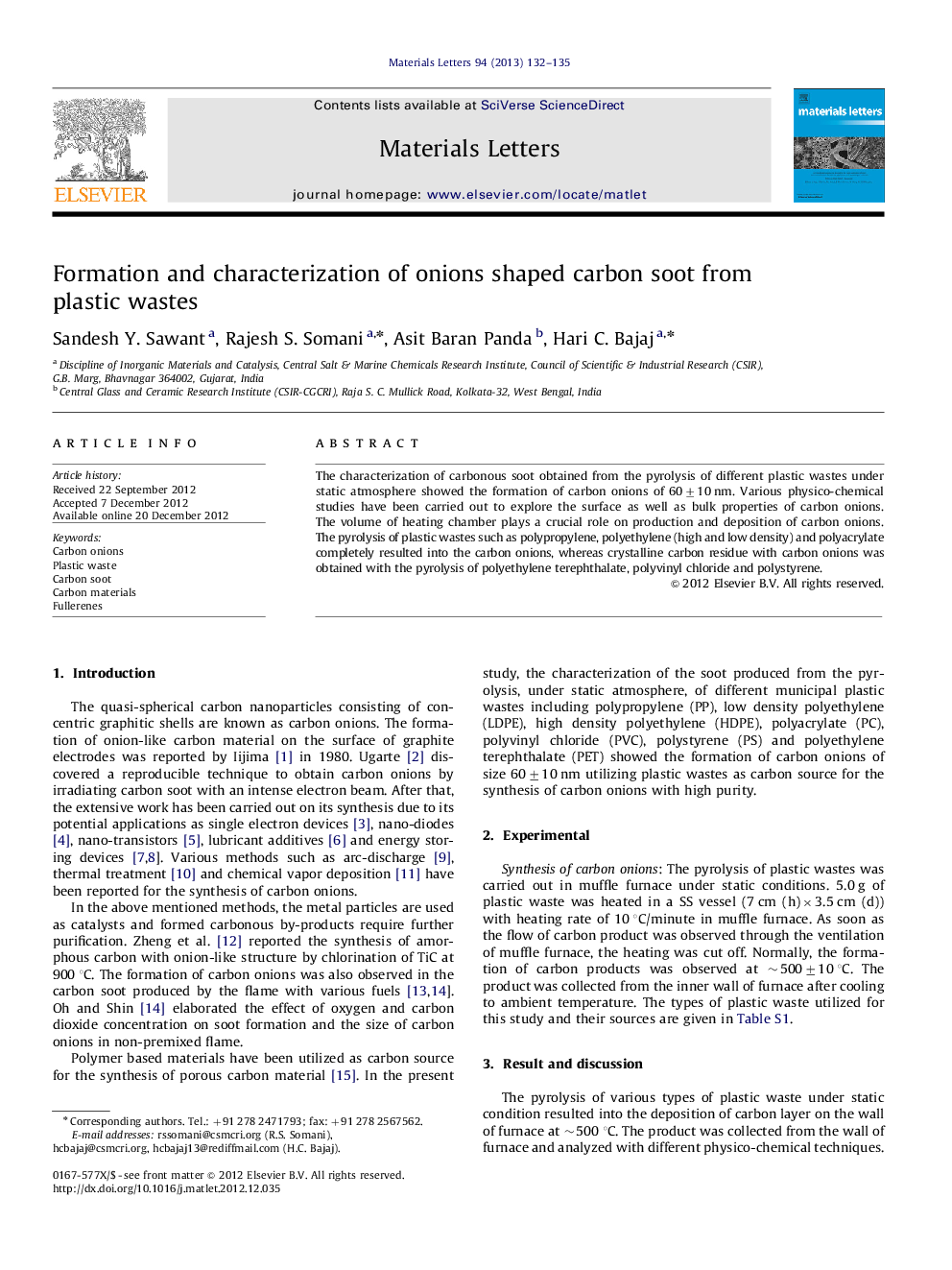| Article ID | Journal | Published Year | Pages | File Type |
|---|---|---|---|---|
| 1645656 | Materials Letters | 2013 | 4 Pages |
The characterization of carbonous soot obtained from the pyrolysis of different plastic wastes under static atmosphere showed the formation of carbon onions of 60±10 nm. Various physico-chemical studies have been carried out to explore the surface as well as bulk properties of carbon onions. The volume of heating chamber plays a crucial role on production and deposition of carbon onions. The pyrolysis of plastic wastes such as polypropylene, polyethylene (high and low density) and polyacrylate completely resulted into the carbon onions, whereas crystalline carbon residue with carbon onions was obtained with the pyrolysis of polyethylene terephthalate, polyvinyl chloride and polystyrene.
Graphical abstractFigure optionsDownload full-size imageDownload as PowerPoint slideHighlights► A simple and convenient route for the synthesis of carbon onions. ► A direct pyrolysis of plastic wastes to carbon onions. ► Effect of plastic wastes and heating chamber size.
